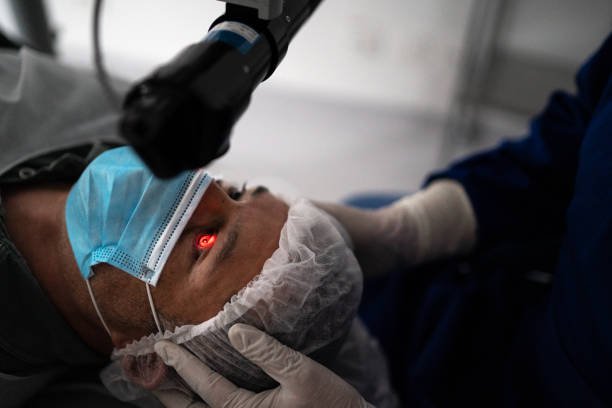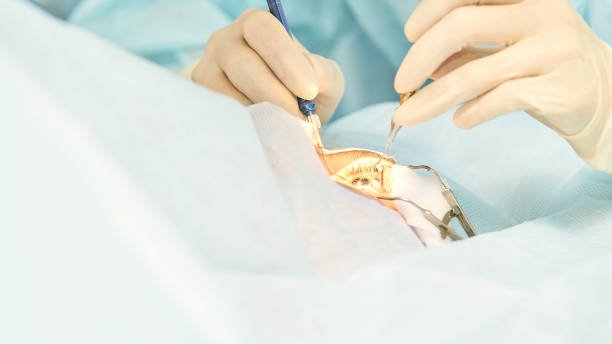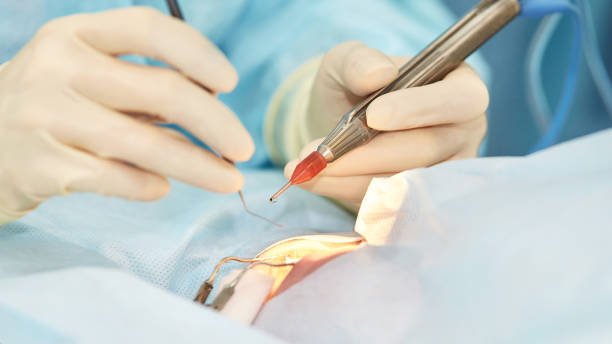
Cataract surgery is a common and safe procedure to remove a cloudy lens from the eye and replace it with a clear artificial lens, called an intraocular lens (IOL). Cataracts, which cause blurry vision and glare, usually develop with age. The surgery is typically done under local anesthesia and takes less than 30 minutes. Most patients experience improved vision within a few days. Cataract surgery restores clarity and quality of life, making it one of the most effective eye treatments.

LASIK (Laser-Assisted In Situ Keratomileusis) and PRK (Photorefractive Keratectomy) are types of refractive eye surgeries used to correct vision problems like nearsightedness, farsightedness, and astigmatism. Both procedures reshape the cornea using a laser to improve how light focuses on the retina. LASIK involves creating a thin flap in the cornea, while PRK removes the outer layer entirely. Recovery is faster with LASIK, but PRK may be better for those with thin corneas. These surgeries can reduce or eliminate the need for glasses or contact lenses.

Retinal detachment repair is an urgent surgical procedure to reattach the retina, a light-sensitive tissue at the back of the eye that can peel away from its normal position. If left untreated, it can lead to permanent vision loss. Treatment options include laser surgery, cryopexy (freezing), pneumatic retinopexy (gas bubble), scleral buckle, or vitrectomy, depending on the severity and location of the detachment. Early detection and prompt treatment are crucial to preserving vision and preventing blindness.

Vitrectomy is a surgical procedure that involves removing the vitreous gel—the clear, jelly-like substance inside the eye—to treat various eye conditions. It is commonly used for retinal detachment, macular holes, vitreous hemorrhage, and complications from diabetic eye disease. During the surgery, the vitreous is replaced with a saline solution, gas bubble, or silicone oil to maintain the eye’s shape and support healing. Vitrectomy helps restore or stabilize vision and is usually performed under local or general anesthesia.

A corneal transplant, also known as keratoplasty, is a surgical procedure to replace a damaged or diseased cornea with healthy donor tissue. It is used to restore vision in people with corneal scarring, keratoconus, infections, or injuries. There are different types, including full-thickness (penetrating keratoplasty) and partial-thickness (lamellar keratoplasty) transplants. The surgery is typically done under local or general anesthesia, and recovery may take several months. With proper care, most patients experience significant improvement in vision.

Eye injections, also known as intravitreal injections, are used to treat retinal conditions like age-related macular degeneration (AMD), diabetic retinopathy, and retinal vein occlusion. Medications such as anti-VEGF drugs (e.g., Avastin, Lucentis, Eylea) are injected directly into the vitreous of the eye to reduce swelling, slow disease progression, and preserve vision. The procedure is quick, usually painless, and done under local anesthesia. Regular injections may be needed over time for the best results.

Squint correction surgery, also known as strabismus surgery, is performed to align the eyes properly when they point in different directions. The procedure involves adjusting the eye muscles by either tightening or loosening them to improve eye coordination and appearance. It is typically done under general anesthesia and may be recommended for children or adults with persistent squint. Surgery can improve vision, depth perception, and confidence. Recovery is usually quick, with most patients returning to normal activities within a few days.